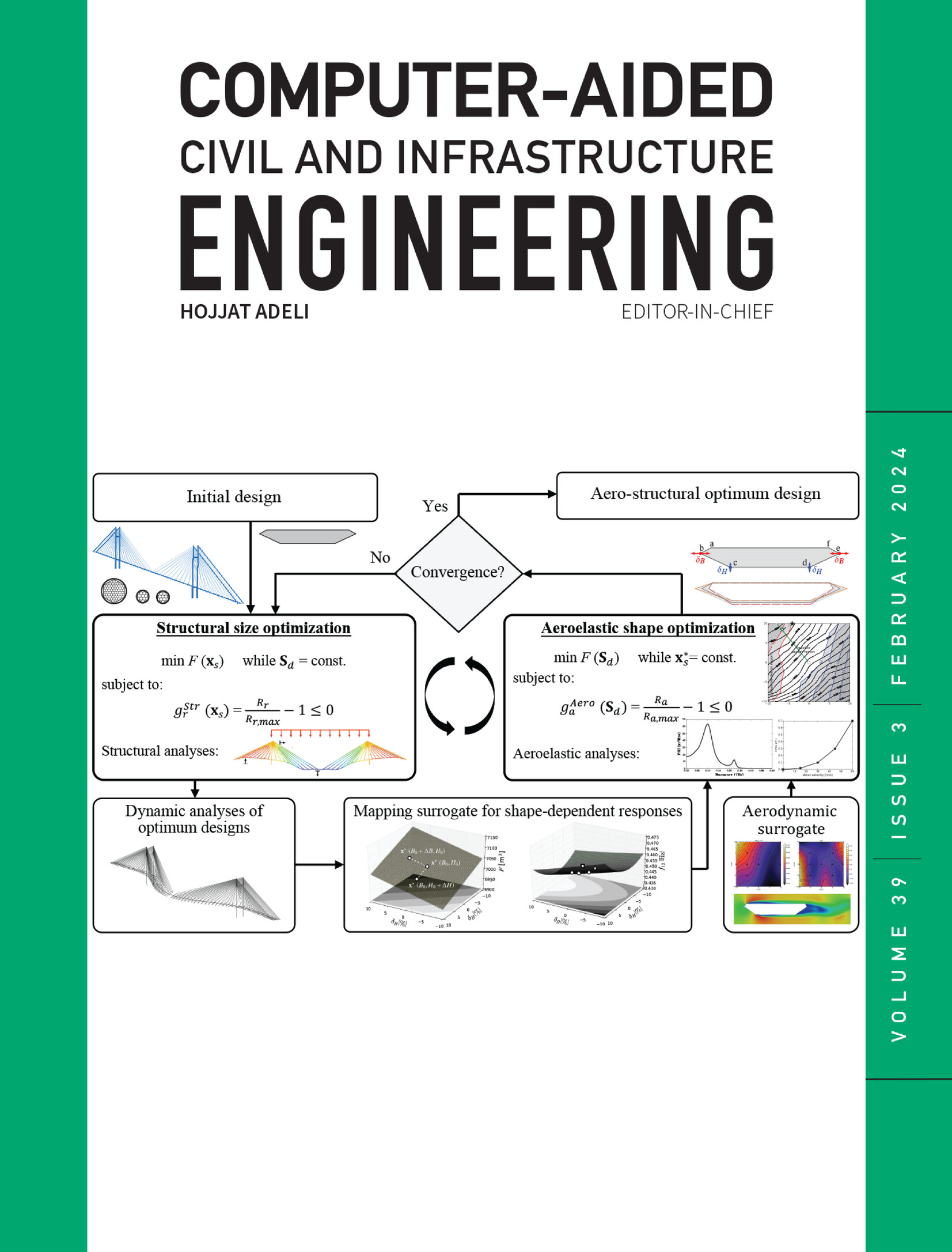大规模道路网络中交通信号和车辆路线的分层自适应交叉耦合控制
IF 8.5
1区 工程技术
Q1 COMPUTER SCIENCE, INTERDISCIPLINARY APPLICATIONS
引用次数: 0
摘要
交通信号配时和车辆路径已被实证证明是网络级城市道路交通管理中最有前途的两种模式。然而,基于Wardrop理论的主流研究仍然将这两个模块分开对待,没有实现有效的耦合。随着城市规模的不断扩大,基于优化的方法面临着计算复杂性不断增加的挑战,这受到小规模道路网络的限制。为了解决上述挑战,本文提出了HAC3,一种用于全网流量管理的分层自适应交叉耦合控制方法。HAC3采用滚动地平线架构,包括快速更新阶段和慢速更新阶段。慢更新阶段的核心是时空叠加车辆路径规划(SSP)模块,该模块根据路网状态和各个交叉口的交通信号配时为每辆联网车辆分配最优路径,明确路权分配的优先级,避免陷入局部最优。将快速更新阶段用于多交叉口自适应交通信号控制(TSC),以交叉口状态和车辆路径为输入,优化信号配时方案。通过两阶段的异步交叉耦合优化,可以在保证均衡的前提下提高路网效率。实验结果表明,HAC3在合成和现实世界道路网络数据集上都取得了卓越的收敛性能,优于基线方法,并证明了其在大规模道路网络中的可扩展性。即插即用实验表明,所提出的HAC3框架可以与其他主流信号控制模型集成。本文章由计算机程序翻译,如有差异,请以英文原文为准。
Hierarchical adaptive cross‐coupled control of traffic signals and vehicle routes in large‐scale road network
Traffic signal timing and vehicle routing have been empirically demonstrated as the two most promising paradigms for network‐level urban road traffic management. However, mainstream studies based on Wardrop's theory continues to treat these two modules separately without achieving effective coupling. Optimization‐based methods face the challenge of increasing computational complexity as urban scales continue to expand, constrained to small‐scale road networks. To address the above challenges, this paper proposes HAC3, a hierarchical adaptive cross‐coupled control method for network‐wide traffic management. HAC3 utilizes a rolling horizon architecture, comprising a fast update stage and a slow update stage. The core of the slow update stage is a spatiotemporal superposition vehicle route planning (SSP) module, which assigns the optimal route to each connected vehicle (CV) based on the road network state and the traffic signal timing of each intersection, and clarifies priority in right‐of‐way allocation to avoid falling into local optimal. The fast update stage is used for multi‐intersection adaptive traffic signal control (TSC), taking the intersection state and vehicle routes as inputs to optimize the signal timing scheme. Through the asynchronous cross‐coupling optimization of the two stages, the road network efficiency can be improved while ensuring equilibrium. Experimental results show that HAC3 achieves superior convergence performance on both synthetic and real‐world road network data sets, outperforming baseline methods and proving its scalability to large‐scale road networks. Plug‐and‐play experiments indicate the proposed HAC3 framework can integrate with other mainstream signal control models.
求助全文
通过发布文献求助,成功后即可免费获取论文全文。
去求助
来源期刊
CiteScore
17.60
自引率
19.80%
发文量
146
审稿时长
1 months
期刊介绍:
Computer-Aided Civil and Infrastructure Engineering stands as a scholarly, peer-reviewed archival journal, serving as a vital link between advancements in computer technology and civil and infrastructure engineering. The journal serves as a distinctive platform for the publication of original articles, spotlighting novel computational techniques and inventive applications of computers. Specifically, it concentrates on recent progress in computer and information technologies, fostering the development and application of emerging computing paradigms.
Encompassing a broad scope, the journal addresses bridge, construction, environmental, highway, geotechnical, structural, transportation, and water resources engineering. It extends its reach to the management of infrastructure systems, covering domains such as highways, bridges, pavements, airports, and utilities. The journal delves into areas like artificial intelligence, cognitive modeling, concurrent engineering, database management, distributed computing, evolutionary computing, fuzzy logic, genetic algorithms, geometric modeling, internet-based technologies, knowledge discovery and engineering, machine learning, mobile computing, multimedia technologies, networking, neural network computing, optimization and search, parallel processing, robotics, smart structures, software engineering, virtual reality, and visualization techniques.

 求助内容:
求助内容: 应助结果提醒方式:
应助结果提醒方式:


